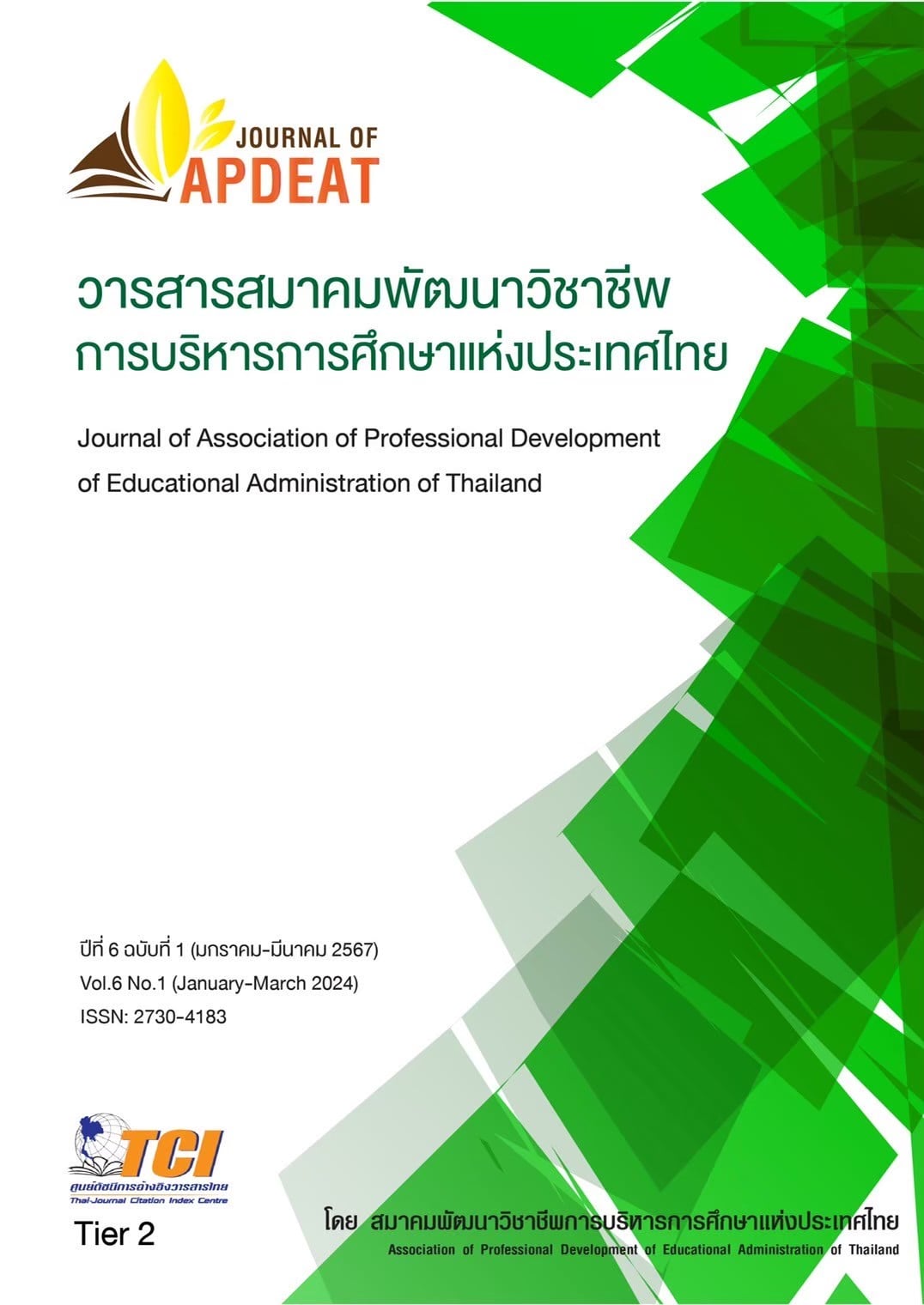- Participatory on Organizing Civil Forum in Preserving Canal Lines of Phra Phimon Racha Canal.
Main Article Content
Abstract
This research aims to 1) strengthen the community organizations' capacities to coordinate cooperation and maintain water quality in the Phra Phimon Racha Canal, 2) promote and push community organizations to create innovations in water quality restoration and care through appropriate technology, and 3) to support the community in organizing cultural activities in the canal area communities and the public can learn the benefits of canal maintenance concretely. It is a Participatory Action Research (PAR). Research tools include evaluation forms of field participatory observation. A target group is the villager researcher from community leaders as volunteers. The data collected from the Observation form Let us do a content analysis of the qualitative target group and then use the information gathered from interviews. The research results showed community organizations' potential to cooperate to maintain water quality. Community leaders and representatives of communities, including organizations/agencies in the area, to gain potential in knowledge, skills, attitudes, self-concept, traits, and motivation for working together to maintain water quality. The community has developed and created innovations to restore and care for water quality in the Phra Phimon Racha Canal, namely grease traps and green tanks. Moreover, organizing cultural activities to maintain canals. For example, the community had traditionally held boat races and fish coop farming to increase income.
Article Details
References
Chollada Hong-Ngam,(2020) Office of Library Information Sukhothai Thammathirat, Open University, Local Information Working Group Provincial university library network, (Online) (Retrieved on December 21st, 2021,)
from https://oer.learn.in.th/authors/authorDetail/7249.
Krirk University (2021), Action Plan for the academic year 2021 that is consistent with strategic issues, policy framework, objectives, and goals for implementation. The 7th Five-Year Development Plan of Krirk University (2021-2025).
Nithi Eawsriwong. (2015). Health and management. (Online) (Retrieved on January 1st, 2022). From http://www.elearning.msu.ac.th/opencourse/
Nonthaburi Real Estate Trade Association, (2020). Nonthaburi, at present, is more than a city that has grown alongside Bangkok. (Online). (Retrieved on January 1st, 2022). From http://realestatenonthaburi.or.th/articles.
Pasu Decharin, and Chaiwat Haruthaiphan. (2010). Planning and Strategic Setting. Bangkok: Chulalongkorn University Printing House.
Pramukh, Srichaiwong, and Chatnarongsak (2023.) Community Innovation for Water Security Stability for Subsistence of People in Lapathao River Basin, Muang District, Chaiyaphum Province. Journal of Local Administration and Innovation, 7(1), 243-260.
Prawet Wasi. (2015). The concept of the community.(Online).(Retrieved on January 1st, 2022). From http://www.elearning.msu.ac.th/opencourse/SS
Research and Development Office of Personnel Systems (2017). Thailand in the context of Thailand 4.0 under The Constitution of the Kingdom of Thailand, B.E. 2560. Bangkok: Office of the Commission of Civil Servants.
Thai-German Cooperation. (2022). Community waste and wastewater management project. Under the Thai-German Program for (Climate Change Cooperation, 2020). (Online) (Retrieved on January 1st, 2022). From. https://www.thai-german-cooperation.info/th/thai-german-climate-programme-waste/.
Tun Chomchuen and Thasanee Thungwong (2019). Capacity building of community household waste management in Mae Kham Nam Lat Subdistrict Health Promoting Hospital Service Area. Mae Chan District, Chiang Rai Province. Journal of Community Development and Quality of Life, 7(2), 156-166.
Wijarn Simachaya, (2021). Wastewater problems from the community. A great source is waiting to be tangible. (Online) (Retrieved on January 1st, 2022). From. https://mgronline.com/greeninnovation/detail/9640000092795


